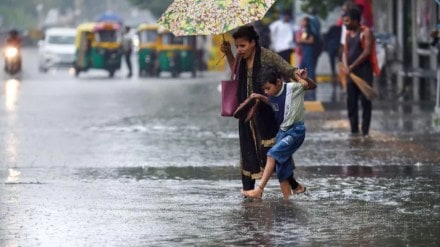The country may be heading for its weakest monsoon in eight years after the driest August in nearly a century and a quarter, according to an assessment by the India Meteorological Department (IMD). IMD officials estimate the rainfall this year to be around 90% of the Long Period Average (LPA). They attribute the shortfall to the El Nino factor, which impacted the rains in August and could continue to do so in September.Although kharif sowing has been largely completed, and the area covered thus far is marginally above the year-ago level, the current dry spell could hit crop yields.
Pulses and oilseeds are seen to be more vulnerable to the rain deficit, as these crops are approaching the flowering stage. According to the Met department, until Monday, the overall monsoon rains have been at 92% of the LPA. With the exception of northwest India, where precipitation so far is 6% above the benchmark, the rains have been deficient in the rest of the regions — central India (-7%), east and northeast (-15%) and south peninsula (-17%) respectively. In 2015, the rainfall was 86% of the LPA while in 2018 precipitation was 91% of the LPA.
So far this month, rains have been 32% below the LPA. “It would be difficult to bridge such a large deficiency in the next month even if the September rains are better than in August,” a senior scientist with IMD told FE. He said the August rainfall may be the lowest since 1901, when the met department started collecting data.Rainfall during the June-September period is likely to be around 90% of benchmark this season, the official said.
This is despite 13% excess precipitation in July.Worryingly, as on August 24, water levels in 146 key reservoirs had fallen 21% below the last year’s levels and 6% below the average of the last 10 years. This was primarily because of the sharp fall in water levels in the southern regions.As of now, 60% of the 717 districts in the country have received normal or excess rainfall. The rest of the 290 districts have received deficient or scanty rainfall.In April, IMD had said it expected rainfall in June-September to be in the ‘normal’ range at 96% of LPA.
Private weather forecasting agency Skymet had said precipitation this year could be ‘below normal’ at 94% of the LPA.IMD classifies ‘normal’ rainfall between 96% and 104% of LPA. Rainfall between 90%-95% is considered ‘below normal’ while precipitation below 90% of LPA is termed ‘deficient’. Rainfall received between 104%-110% of benchmark fall in the ‘above normal’ category while volume of rainfall above 110% of LPA is referred as ‘excess’. The LPA is average rainfall received during 1971-2020 at 87 centimetres.
Rains during August-September, which constitute around 40% of the total monsoon precipitation, are crucial for the growth of kharif crops such as paddy, pulses, oilseeds, cotton and sugarcane.India’s foodgrain production rose by 5% on year to a new record of 330.5 million tone (MT) in the 2022-23 crop year. The target for 2023-24 is marginally higher at 332 million tonne (MT).While rainfall has been uneven in some years, the impact on foodgrains production has been seen to be marginal. For instance, in 2014, monsoon rains were 12% below normal but food grain output declined by just 5% to 252 MT. In 2018, monsoon rains were 9% below normal but the production of rice, wheat and pulses did not fall in the 2018-19 crop year.
